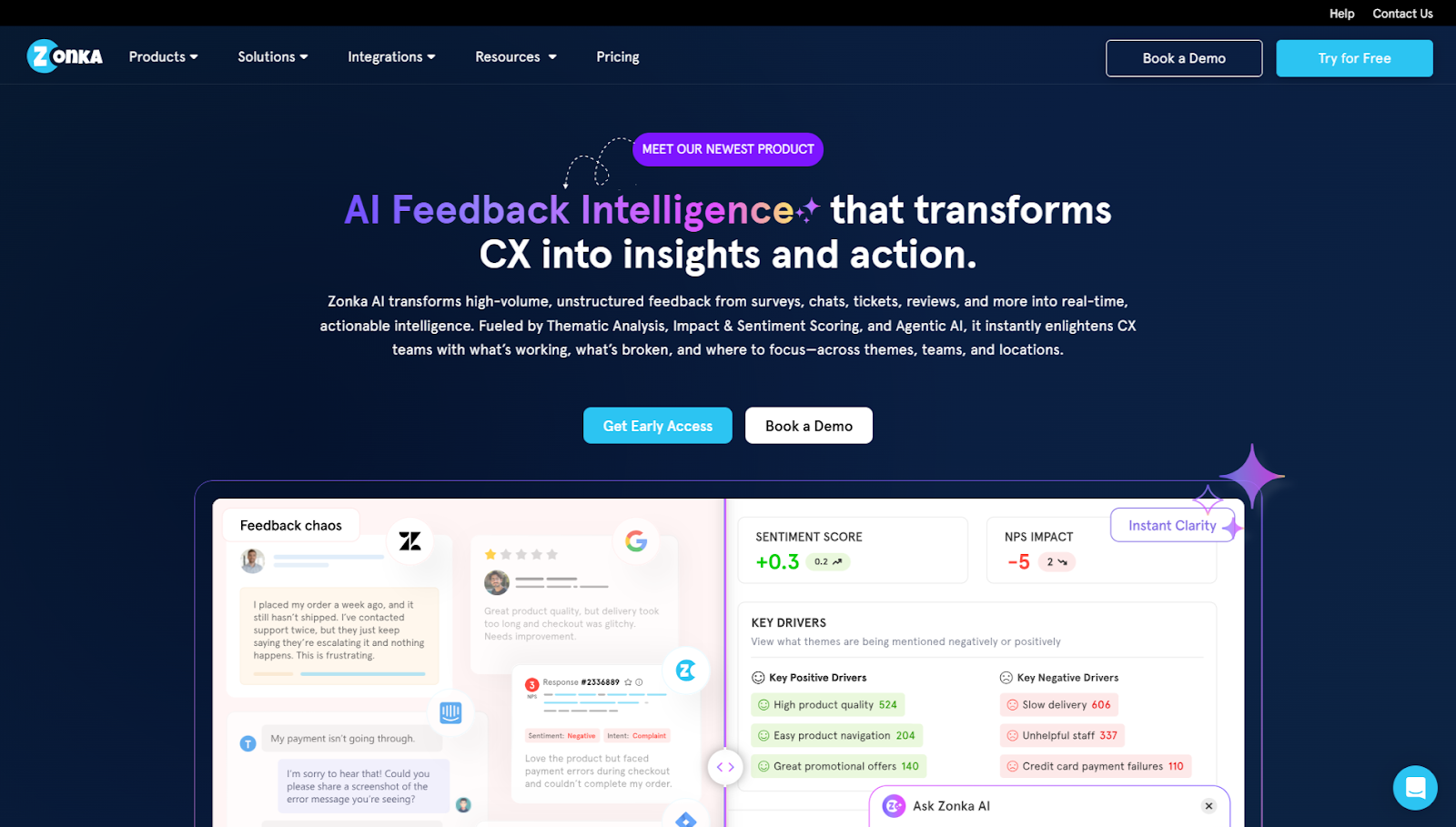
If you’ve ever manually coded 20+ interview transcripts, you know the grunt work and fatigue is real. Themes start blending together, the fifth “customer frustration” sounds like the twentieth, and you’re buried in sticky notes and highlighters. Thankfully, today’s best thematic analysis software—especially those powered by AI—can spot patterns, summarize insights, and surface emerging themes in a fraction of the time.
But not all tools use AI the same way. Some rely heavily on machine learning to generate themes automatically. Others offer AI as a light assistant to speed up your manual tagging. This post will break down the best thematic analysis coding software—and highlight exactly how much AI is doing the heavy lifting.
Thematic analysis software helps you identify patterns, categorize user feedback, and surface themes across qualitative data sources like interviews, surveys, support chats, and app reviews. AI-powered tools take this a step further by automatically coding, clustering, and summarizing insights—saving you days of manual work.

AI Integration: Full-stack AI (interview + analysis)
Best for: AI-moderated interviews + AI-powered thematic coding & synthesis
UserCall is built for speed and depth. It doesn’t just analyze transcripts—it conducts the interviews too. With AI moderators that ask probing follow-ups and smart back-end analysis, UserCall turns voice interviews into structured insights in minutes. Upload past transcripts or run new interviews with its built-in AI.
How AI helps:
Great for: Lean research teams, founders, PMs, UX researchers who need to move fast

AI Integration: Moderate (AI suggestions + manual workflow)
Best for: Building a collaborative research repository
Dovetail combines manual and AI-supported workflows. Its AI suggests tags and themes as you highlight snippets, but you stay in control. It’s less about full automation and more about giving researchers a head start on coding, especially across team projects.
How AI helps:
Great for: UX research teams scaling insight libraries

AI Integration: Advanced NLP + custom AI training
Best for: Large-scale customer feedback (e.g. survey open-ends, NPS)
Thematic is great for thematic analysis at scale. Its natural language processing (NLP) engine identifies recurring themes and tracks them over time, allowing for deep longitudinal and trend analysis. You can customize theme taxonomies, or let the AI build them from scratch.
How AI helps:
Great for: CX, VoC, and marketing insights teams

AI Integration: Assisted theme generation based on highlights
Best for: Moderated UX interviews with video/audio
Looppanel blends human and AI workflows. Researchers highlight key moments in transcripts, and the AI recommends themes based on those highlights. It doesn’t auto-code full transcripts, but it accelerates synthesis once you’ve tagged relevant pieces manually.
How AI helps:
Great for: Product and UX teams doing usability testing or concept validation

AI Integration: Advanced (automated theme detection + sentiment layering)
Best for: Real-time analysis of survey-based customer feedback
Zonka Feedback transforms raw, open-ended survey responses into structured, actionable themes using NLP. Designed for teams analyzing NPS, CSAT, CES, and qualitative feedback at scale, its AI intelligently codes responses by surfacing recurring topics, clustering sub-themes, and layering sentiment and urgency on top. It also tracks how themes evolve over time, helping teams uncover emerging issues, prioritize what matters most, and close the loop faster.
How AI helps:
Great for: CX, product, marketing and support teams closing the feedback loop at scale
Here are a few things I’ve learned over 10+ years running research projects:
Thematic analysis doesn’t have to feel like death by highlighter. With the right tool, you can go from hours of raw mess to sharp insights that actually drive action. Whether you want full AI automation or just smarter ways to structure your manual coding, there’s a tool out there that fits your workflow to get to high impact actionable insights.